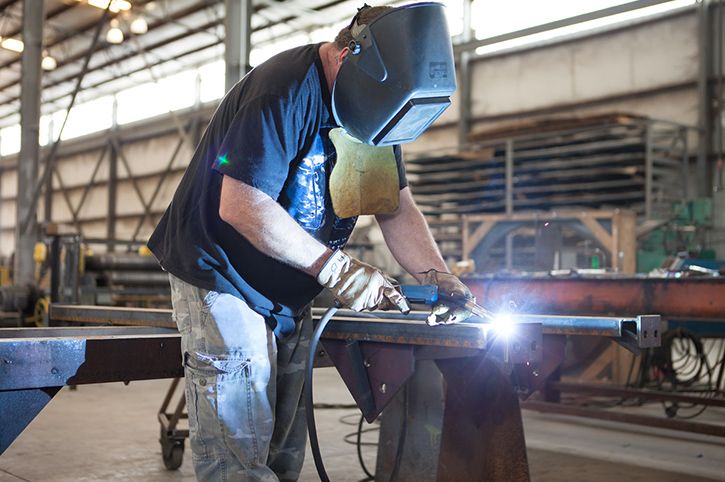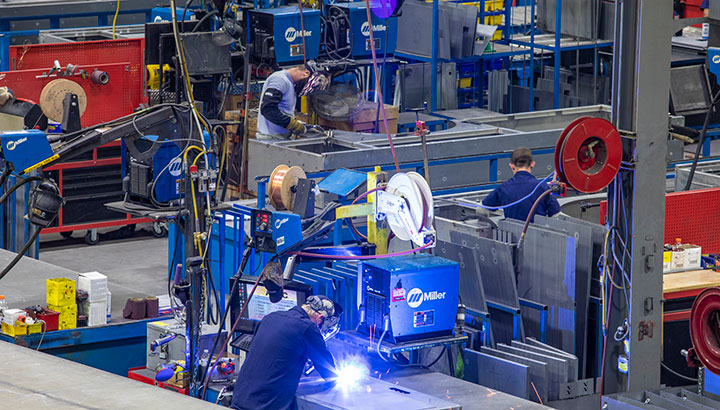Everything about Welding: Trick Insights Into Techniques and Ideal Practices for Success
Welding includes a range of techniques, each suited for particular materials and applications. Comprehending these methods, such as GMAW, SMAW, and TIG, is essential for accomplishing perfect outcomes. The right equipment and safety and security practices can not be forgotten. As prep work and troubleshooting play crucial duties in the welding procedure, understanding these aspects can substantially improve the quality of the end product. What are the essential elements that assure a successful weld?
Recognizing Different Welding Methods
Welding techniques incorporate a range of methods, each matched to details applications and products. Among the most common strategies are Gas Steel Arc Welding (GMAW), Secured Metal Arc Welding (SMAW), and Tungsten Inert Gas Welding (TIG) GMAW, additionally referred to as MIG welding, is prominent for its rate and versatility, making it ideal for slim products. SMAW, or stick welding, is favored for its simplicity and performance in outside atmospheres, particularly with thicker metals. TIG welding offers precision and control, making it suitable for elaborate work and non-ferrous metals (Montana Mobile Welding and Repair Belgrade Welding). Each strategy has its special advantages and considerations, permitting welders to pick the very best approach based on the job's needs, product kind, and wanted outcomes. Understanding these techniques is vital for effective welding
Important Welding Equipment and Tools
While different welding methods require particular skills, the ideal equipment and tools are similarly essential for attaining high quality results. Vital welding equipment includes welding machines, which vary relying on the method-- such as MIG, TIG, or stick welding. Protective equipment, consisting of gloves, safety helmets, and aprons, assurances security and comfort throughout the process. Additionally, fixtures and clamps help protect materials in place, making certain accuracy in welds. Consumables like welding poles, wire, and protecting gas are additionally vital components that affect the quality of the weld. In addition, tools such as grinders and cutters help with surface area preparation and post-weld ending up, adding to a specialist result. Purchasing premium devices eventually improves the effectiveness and efficiency of welding tasks.
Security Practices in Welding
Proper safety and security practices are essential in the welding industry to safeguard workers from potential risks. Welders have to wear appropriate personal protective tools (PPE), consisting of headgears with correct shading, gloves, and flame-resistant clothes. Adequate ventilation is important to lower exposure to harmful fumes and gases generated throughout the welding process. In addition, employees ought to be learnt the proper handling of welding tools to stop accidents. Fire precaution, such as keeping combustible materials far from the welding location and having fire extinguishers conveniently offered, are essential. Routine assessments of devices and work spaces can help determine possible hazards before they lead to mishaps. By sticking to these safety practices, welders can develop a safer working atmosphere and minimize threats connected with their trade.
Preparing Products for Welding
Preparing products for welding is a crucial step that greatly affects the top quality and stability of the final product (Montana Mobile Welding and Repair). Correct preparation includes cleaning up the surface areas to remove impurities such as oil, dirt, and corrosion, which can compromise the weld. Methods such as grinding, sanding, or using solvents are generally utilized to accomplish a clean surface area. Additionally, guaranteeing that the materials fit with each other comfortably is crucial; spaces can cause weak welds. It's likewise essential to consider the alignment and positioning of the elements, as this will certainly influence the simplicity of welding and the final outcome. Ultimately, picking the ideal filler product and making certain compatibility with the base steels is vital for attaining strong, resilient welds
Tips for Getting High-Quality Welds
Attaining top notch welds calls for attention to information and adherence to finest techniques throughout the welding process. Correct joint preparation is vital, guaranteeing surface areas are clean and free from impurities. Choosing the proper filler product and welding method based upon the base steels is critical for suitable bonding. Preserving consistent travel speed and angle while welding can protect against flaws and promote uniformity. In addition, regulating warmth input is essential; excessive warmth can cause bending and compromised joints. Regularly evaluating the welds throughout the process enables immediate adjustments if essential. Lastly, using proper post-weld treatments, such as cleansing and stress relief, can improve the resilience and stability of the weld, eventually guaranteeing an effective result.
Repairing Typical Welding Issues
Welding frequently presents difficulties that can influence the high quality and integrity of the last product. Common concerns such as porosity, irregular weld beads, and getting too hot can arise, each calling for particular repairing strategies. Recognizing these troubles is important for welders to enhance their abilities and achieve ideal outcomes.
Porosity Troubles Explained
Porosity can typically be ignored, it remains a crucial problem in welding that can compromise the honesty of an ended up item. Porosity refers to the visibility of tiny gas pockets within the weld grain, which can lead and compromise the joint to premature failing. This trouble generally emerges from impurities, dampness, or incorrect shielding gas insurance coverage during the welding procedure. To mitigate porosity, welders need to confirm that the base materials are completely dry and tidy, use ideal shielding gases, and maintain consistent welding criteria. On a regular basis inspecting the tools and setting can also aid determine prospective concerns prior to they manifest in the weld. Attending to porosity effectively is important for attaining strong, durable welds that meet quality requirements.

Irregular Weld Beads
Irregular weld grains can greatly affect the top quality and strength of a finished product. Different aspects add to this concern, consisting of improper travel rate, inaccurate amperage settings, and inconsistent electrode angles. When the welder relocates too swiftly, a grain might show up slim and do not have penetration, while relocating also gradually can create excessive accumulation. In addition, using the wrong amperage can result in either damaging or too much spatter, both of which concession weld honesty. The welder's technique, such as inconsistent lantern motion, can additionally bring about irregular grain look. To reduce these troubles, welders need to concentrate on preserving constant, controlled movements and ensuring correct tools setups to achieve uniformity in their welds. Consistency is key to achieving strong and trusted welds.
Overheating and Bending Issues
Extreme heat throughout the welding procedure can cause considerable overheating and buckling issues, impacting the architectural honesty of the workpiece. These problems typically manifest as distortion, which can endanger alignment and fit-up, making additional setting up testing. Factors adding to overheating consist of the option of welding parameters, such as voltage and take a trip rate, along with the sort of material being bonded. To reduce these concerns, welders need to keep regular traveling speed and suitable heat input while checking the workpiece temperature level. In addition, pre-heating or post-weld warm treatment can help ease stresses triggered by quick cooling - Belgrade Welding. Normal assessment and adherence to finest practices are important click resources in protecting against getting too hot and guaranteeing the durability and dependability of welded structures
Frequently Asked Inquiries
What Are the Career Opportunities in the Welding Industry?
The welding market uses diverse occupation opportunities, including settings as welders, educators, inspectors, and designers. Experts can operate in manufacturing, building and construction, aerospace, and automobile industries, benefiting from strong need and affordable incomes in different duties.
Just How Can I Improve My Welding Rate Without Giving Up Quality?
To enhance welding rate without sacrificing quality, one ought to exercise efficient methods, keep tools, enhance setups, and improve hand-eye control. Normal training and looking for responses can likewise significantly add to attaining much faster, top notch welds.
What Accreditations Are Available for Welders?
Various qualifications exist for welders, including those from the American Welding Culture (AWS), the National Facility for Building Education And Learning and Research Study (NCCER), and various industry-specific companies. These qualifications improve employability and show ability efficiency.
Just How Does Welding Impact the Properties of Metals?
Welding affects the properties of steels by modifying their microstructure, which can cause changes in strength, solidity, and ductility. Heat input and air conditioning prices during the procedure greatly affect these material attributes.
Can I Bonded Dissimilar Metals With Each Other?
